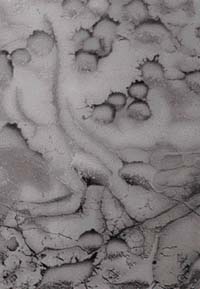Way to go!
 many organisms, such as bacteria and a variety of microbes, live as single cells. Others live in groups, and the cells that make up our bodies constitute a good example of these. In either case, a cell has to be able to sense its surroundings if it is to get by in the world. For a single cell, the most important problem might be to tell where to go to get food, and what places to avoid. The cells in our body need to know who their neighbours are; and, once they make sure they are in the correct neighbourhood, they need to be able to sense precisely where they are situated in relation to the rest.
many organisms, such as bacteria and a variety of microbes, live as single cells. Others live in groups, and the cells that make up our bodies constitute a good example of these. In either case, a cell has to be able to sense its surroundings if it is to get by in the world. For a single cell, the most important problem might be to tell where to go to get food, and what places to avoid. The cells in our body need to know who their neighbours are; and, once they make sure they are in the correct neighbourhood, they need to be able to sense precisely where they are situated in relation to the rest.
This knowledge is essential if the cell is to perform its appropriate role within a tissue and the tissue, within the organism as a whole. So how do cells do all this? The most primitive sensory capability that they possess is the chemical sense, and among chemical senses, none is more fundamental than that which tells a cell towards which direction to move. The phenomenon is called chemotaxis, and it is one of the fascinating forms of behaviour displayed by single cells.
The fundamental problem in chemotaxis is: given that the cell itself is very small
Related Content
- First food: business of taste
- State of the Climate in Asia 2024
- Order of the National Green Tribunal regarding the deplorable condition of a water tank, Golconda Fort, Hyderabad, Telangana, 05/06/2025
- Order of the National Green Tribunal in the matter of Futala lake pollution, Nagpur, Maharashtra, 05/06/2025
- Order of the National Green Tribunal regarding large scale felling of toddy yielding palm trees in Bihar, 05/06/2025
- Order of the National Green Tribunal regarding deterioration of Nayar river, Uttarakhand, 05/06/2025
